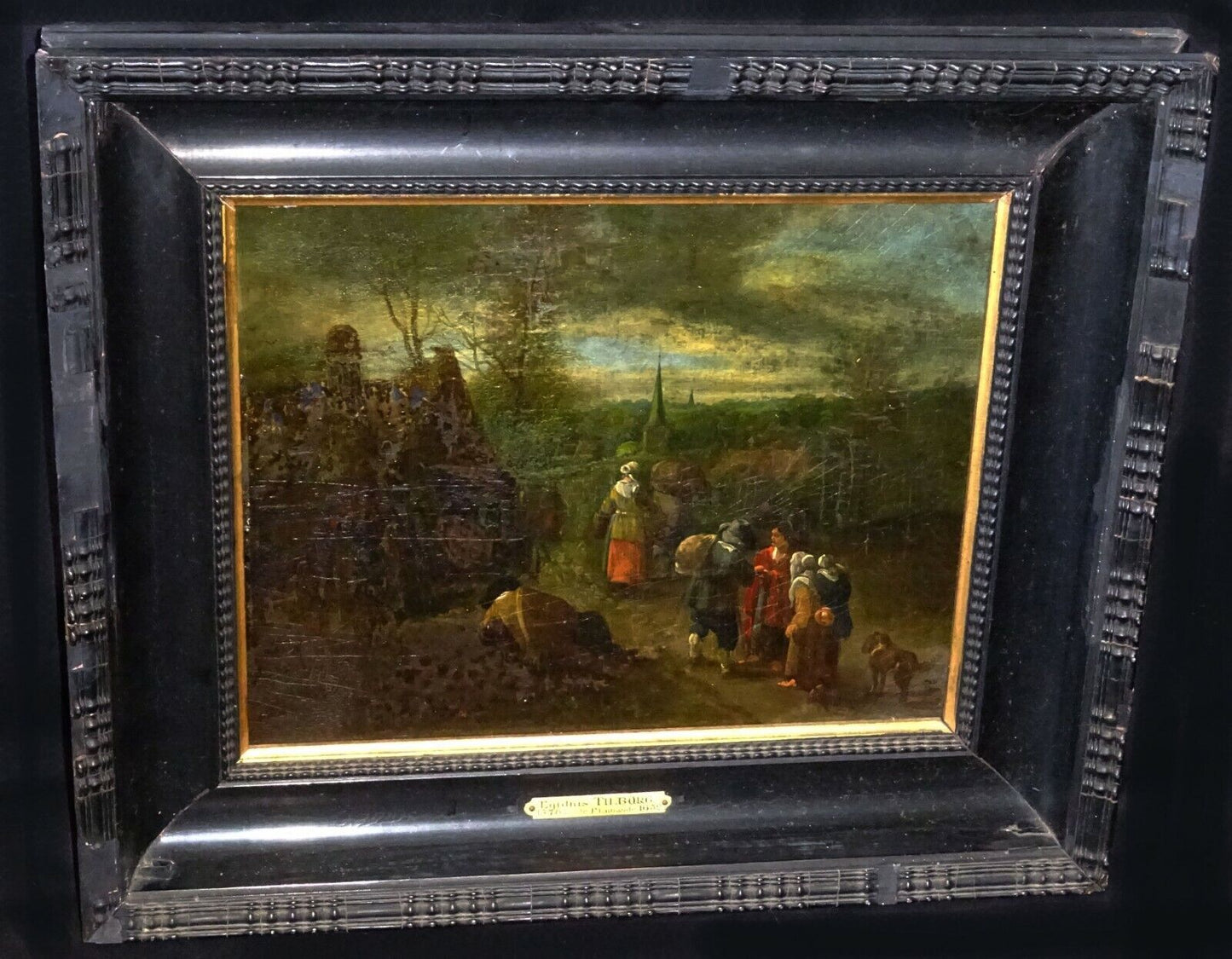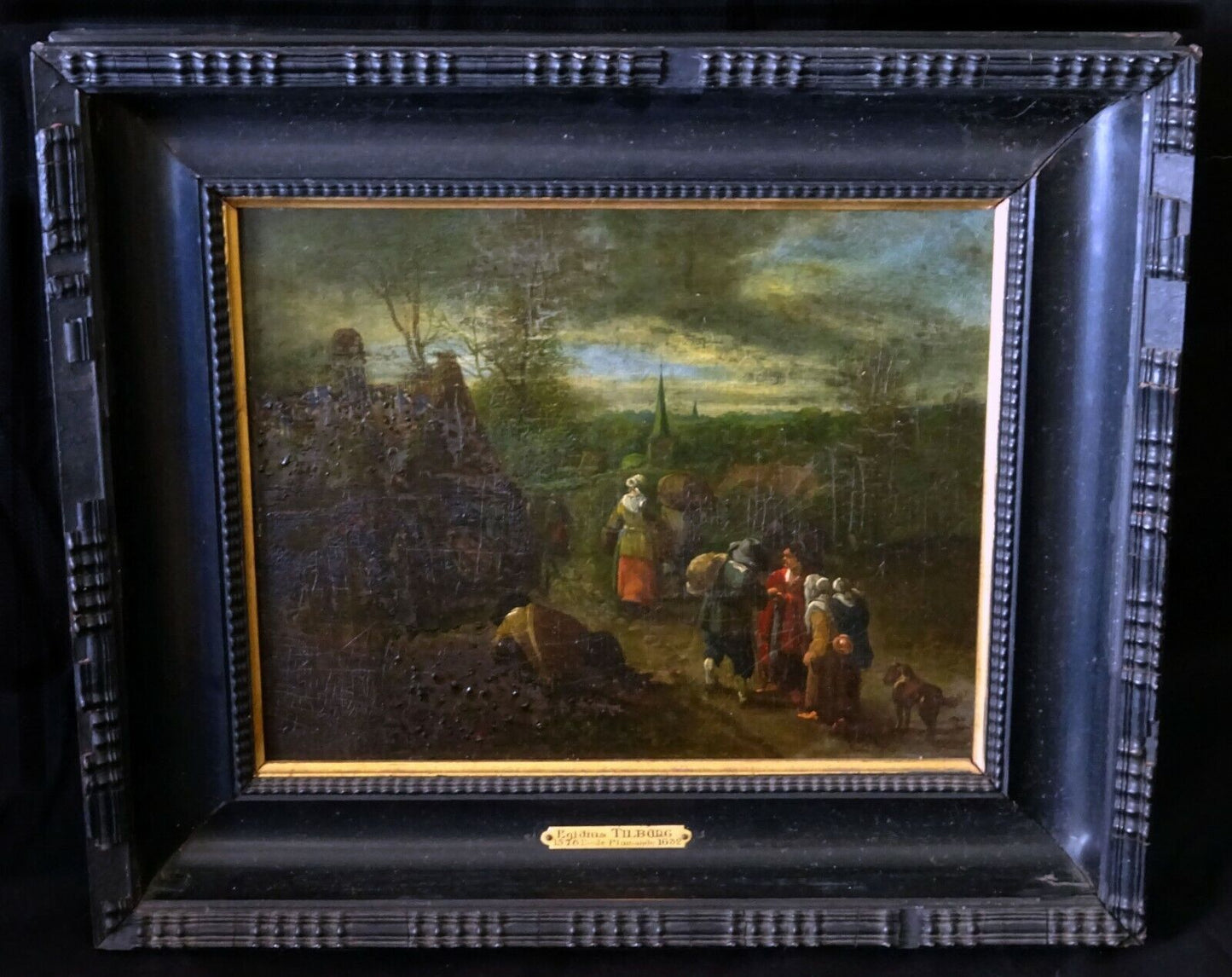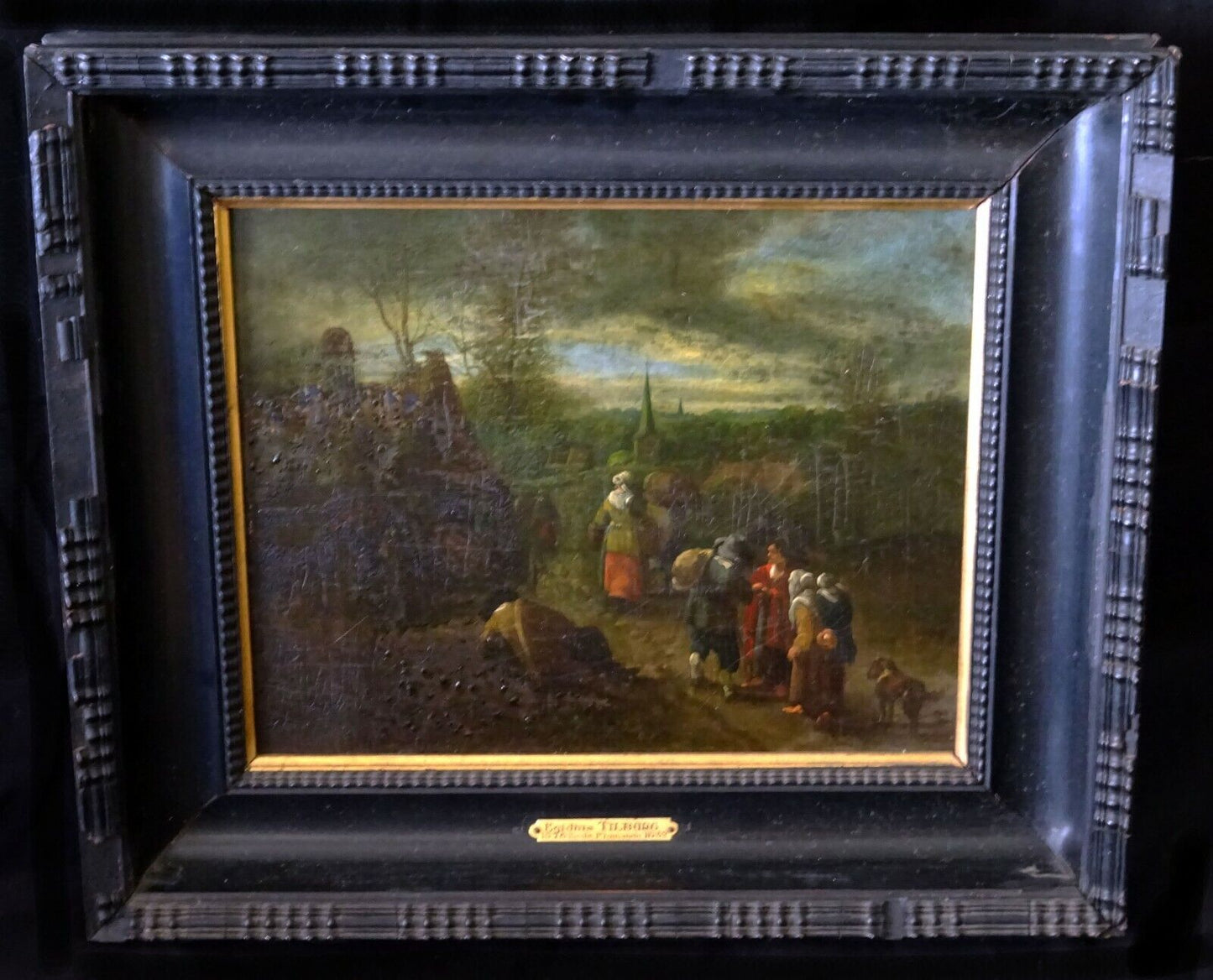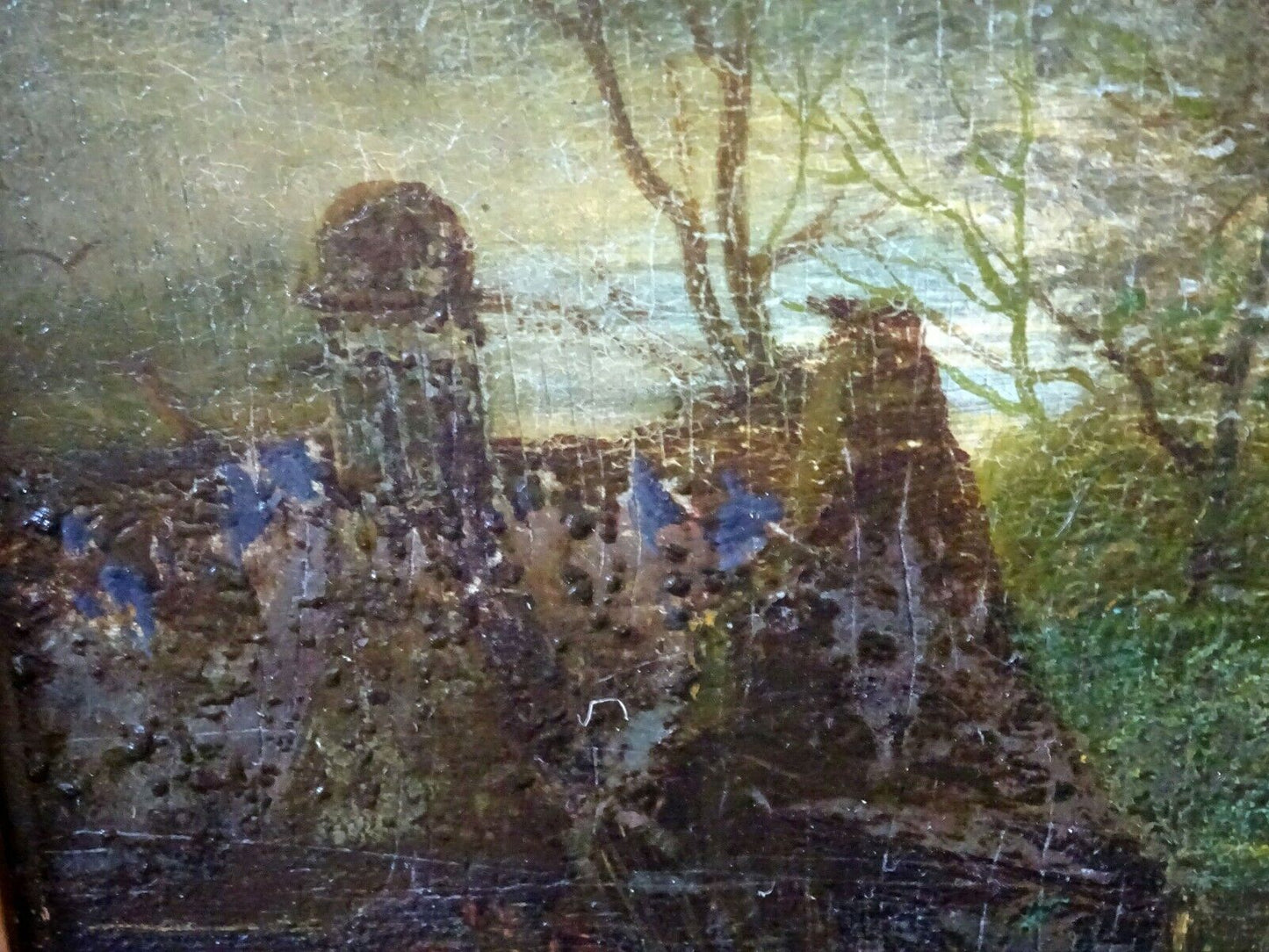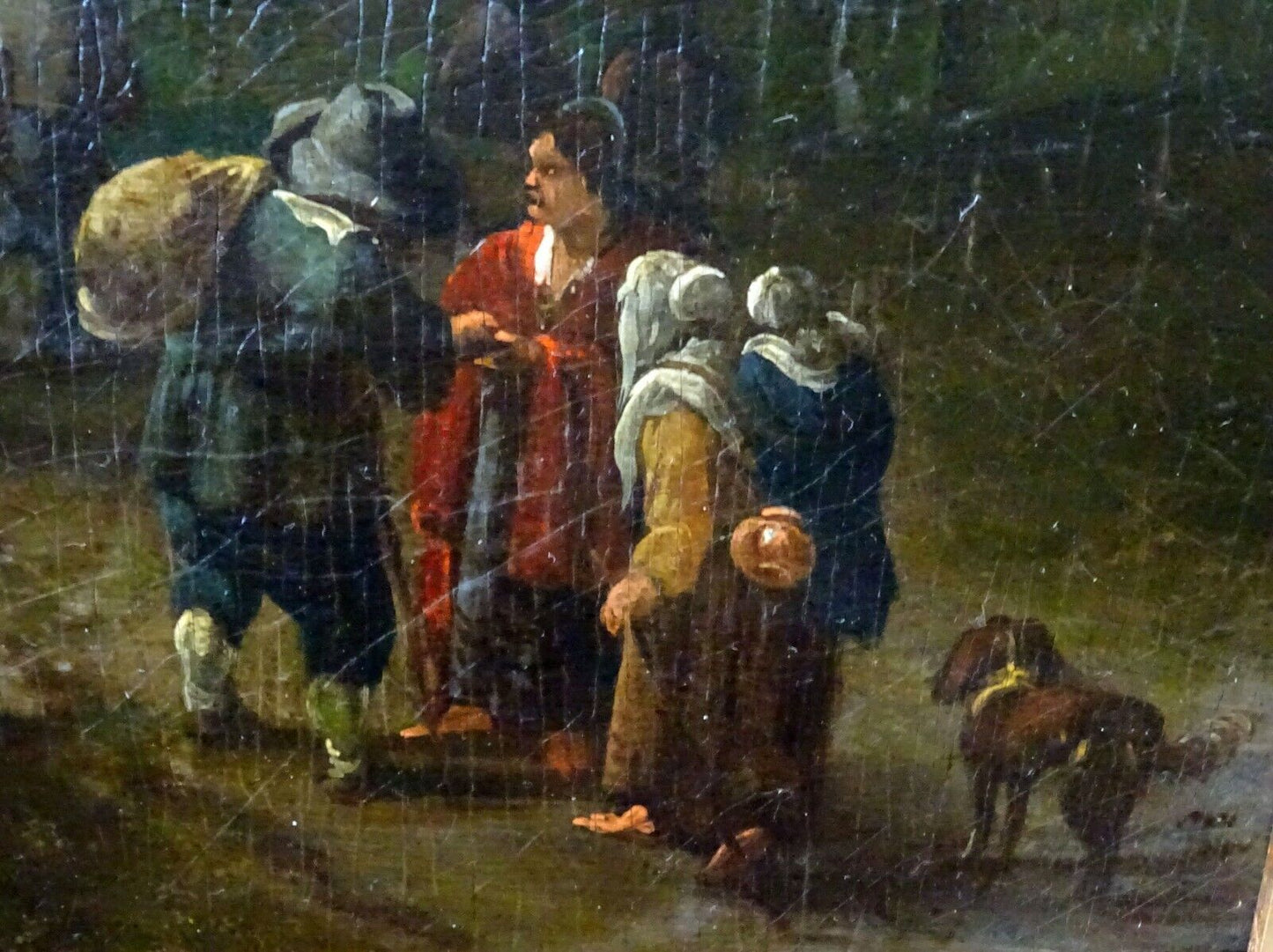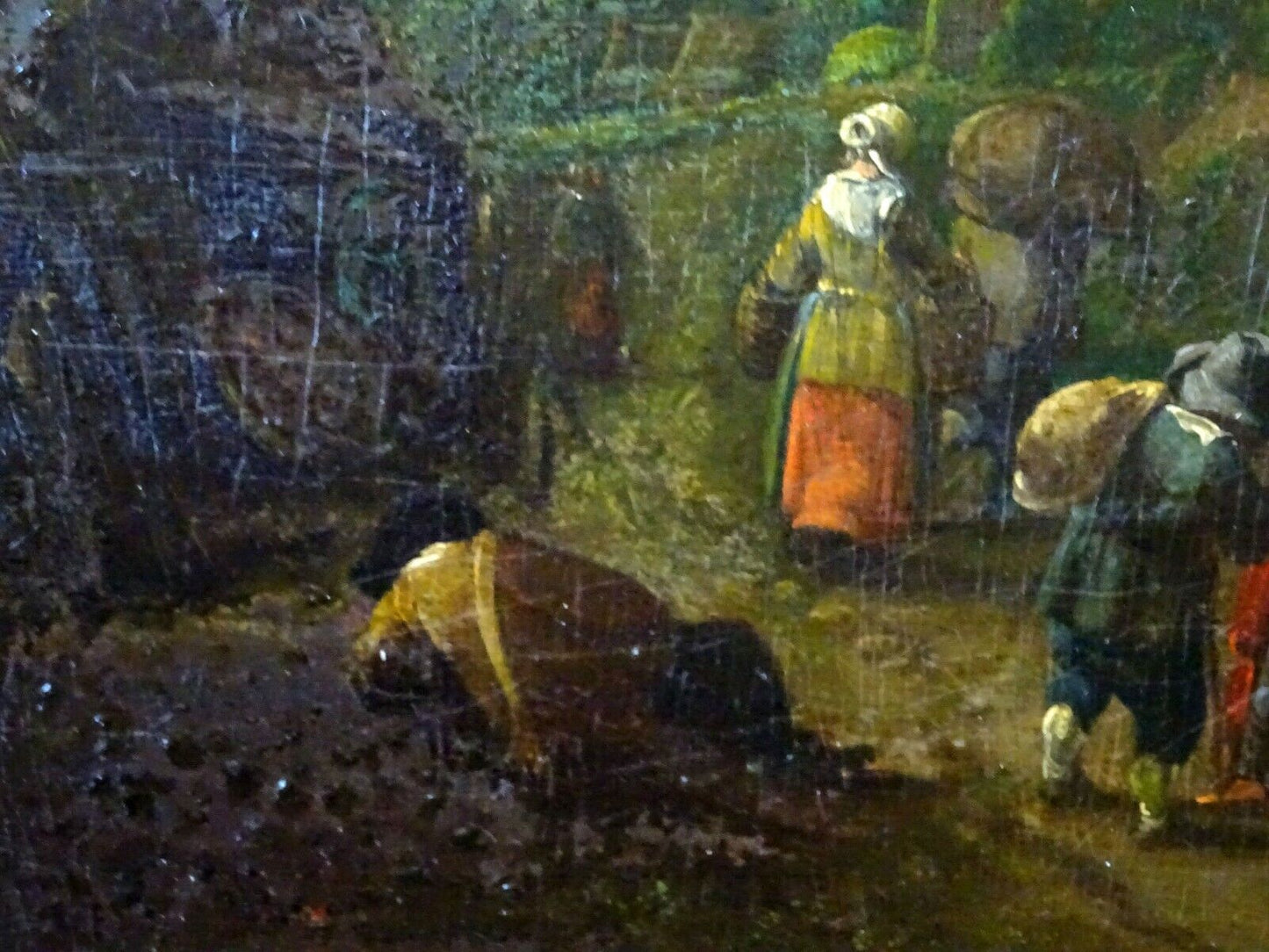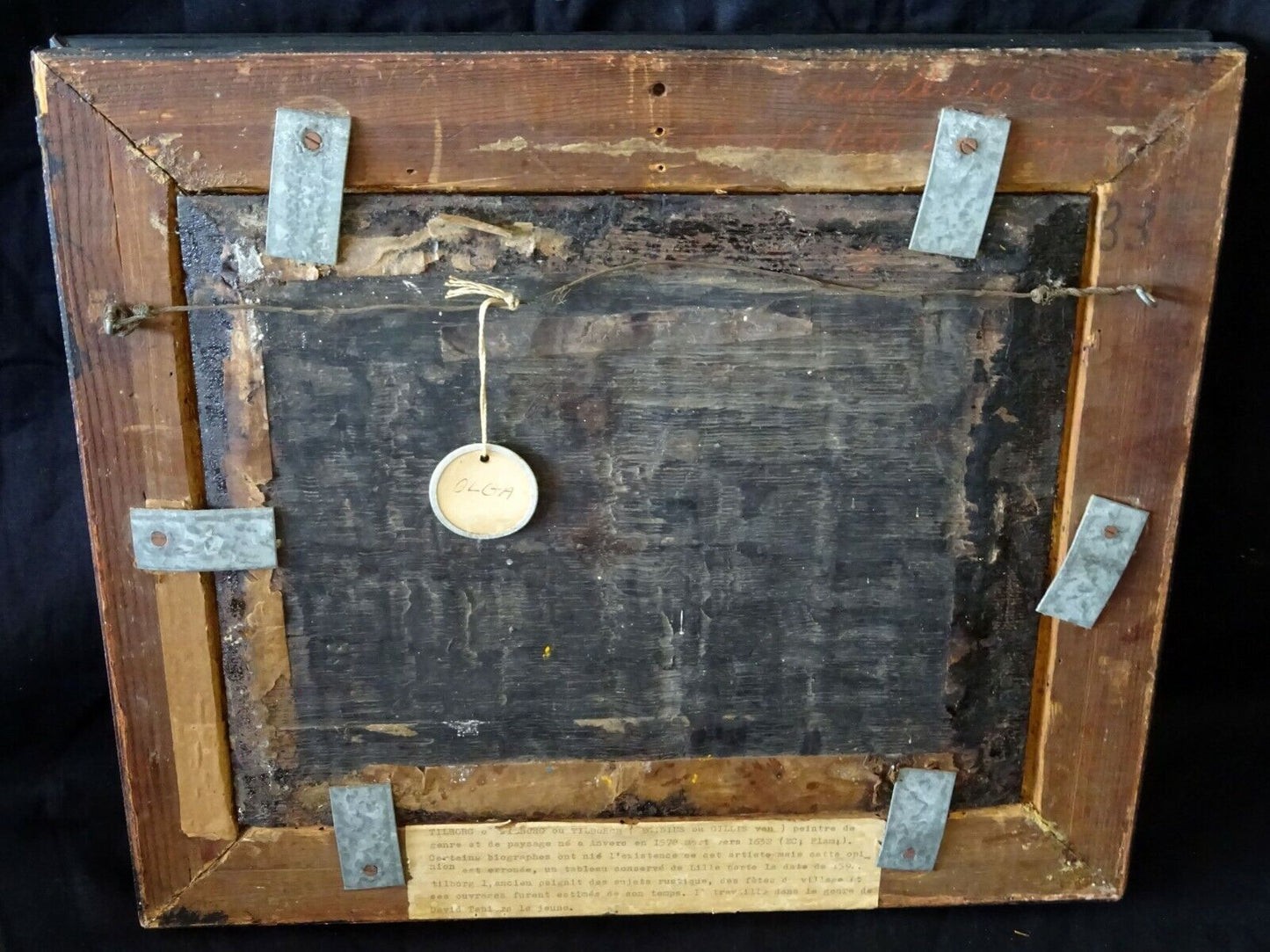Harnisch and Company
17C Belgian Oil Panel Painting Country Road attributed Gillis van Tilborgh (SnE)
17C Belgian Oil Panel Painting Country Road attributed Gillis van Tilborgh (SnE)
Couldn't load pickup availability
Share
Up for sale from a recent estate in Honolulu Hawaii this Belgian framed oil on wooden panel painting that is untitled depicting a country road with figures in the foreground and a town and church in the distance and is attributed to Gillis van Tilborgh (also known as Aegedius or Egedius Tilburgh) the Elder (1576-1632). The condition is described above for more details please check the photos. The item comes from the estate of a Belgian collector that moved to Hawaii in the 1950s. There will be three other pieces offered from the same collection.
Measurements:
Board 10 3/16 inches x 12 ⅝ inches
Frame 14 inches x 16.5 inches
More about the artist:
Gillis van Tilborgh or Gillis van Tilborch (c. 1625 - c. 1678) was a Flemish painter who worked in various genres including portraits, 'low-life' and elegant genre paintings and paintings of picture galleries. He became the keeper of the picture collection of the governor of the Habsburg Netherlands and travelled in England where he painted group portraits.
Gillis van Tilborgh was likely born in Brussels. He is believed to have studied first under his father Gillis van Tilborgh the Elder and then with David Teniers the Younger. He became a master in the Brussels Guild of Saint Luke in 1654. He was the dean of the Guild in 1663.
He was appointed in 1666 as the keeper of the painting collection of the court and castle of Tervuren, the residence of the governor of the Habsburg Netherlands. His presumed master David Teniers the Younger had previously held the same position for Archduke Leopold Wilhelm, the art loving governor of the Habsburg Netherlands.
Van Tilborgh is known to have operated a sizable workshop in Brussels but none of his pupils or assistants have been identified. At around 1670 he travelled to England as is documented by a painting depicting Tichborne House and the Tichborne family giving alms (the so-called Tichborne Dole).
Gillis van Tilborgh's works are dated from 1650 to 1671. He usually signed with the monogram 'TB'. The range of his subject matter is as diverse as that of his presumed master David Teniers the Younger and encompasses portraits, group portraits, tavern scenes, village feasts, merry companies, picture galleries and guardroom scenes.
He was known for his harmonious palette, exact drawing and compositional skills.
In his tavern scenes he shows himself to be a close follower of Adriaen Brouwer, just as David Ryckaert III and Joos van Craesbeeck were. This is clearly visible in The drinker (Museum Boijmans Van Beuningen).
His village scenes follow the style of David Teniers the Younger's mature period. During that period Teniers had moved away from the traditional depictions of peasants as uncultured boors towards a more idealised and elevated perception of peasants and village life. An example is the Village inn in the Hermitage.
He also painted 'gallery paintings' or 'picture galleries', a subject matter that had developed in Flanders in the 17th century. Gallery paintings depict large rooms in which many paintings and other precious items are displayed in elegant surroundings. The earliest works in this genre depicted art objects together with other items such as scientific instruments or peculiar natural specimens.
In some of his gallery paintings he included artists at work. The genre of gallery paintings had by then become a medium to accentuate the notion that the powers of discernment associated with connoisseurship are socially superior to or more desirable than other forms of knowing.
He painted at least two 'guardroom scenes', a type of genre scene that had become popular in the mid-17th century, particularly in the Dutch Republic. In Flanders there were also a few practitioners of the genre including David Teniers the Younger, Abraham Teniers, Anton Goubau, Cornelis Mahu and Jan Baptist Tijssens the Younger. A guard room scene typically depicts an interior scene with officers and soldiers engaged in merrymaking. Guardroom scenes often included mercenaries and prostitutes dividing booty, harassing captives or indulging in other forms of reprehensible activities.
As was the custom at the time, van Tilborgh often collaborated with other artists. He would typically take care of the staffage while the collaborating artist painted the landscape. An example is the Family Portrait said to be of the Van der Witte Family painted together with landscape painter Jan Siberechts (Sotheby's, 5 July 2012, London, lot 134).
Condition:
The painting and frame are overall in acceptable pre-owned condition, the painting was also completely dark and I gave it to a conserver who just cleaned the surface lightly not wanting to go down into the original pigments, he said that the left side of the painting looks slightly bubbly as if it may have stood behind a candle that may have heated the oil painting so look slightly clumpy, the frame surface is coming apart, some of the losses were filled in in black so they are not sticking out as much, but overall after the cleaning the composition became much more visible
